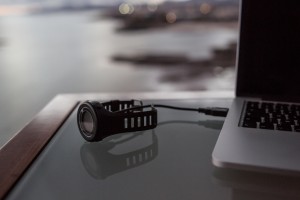FOCUS ON CONNECTED DEVICES TESTING
The Internet of Things (IoT) is clearly in full growth. The global market of connected objects could grow to $ 1,700 billion by 2020! For its part, StarDust is increasing the number of tests of connected devices.
The Internet of Things (IoT) is becoming more widespread: 2015 was announced as the year of connected objects! Even if IoT is sometimes questioned, it is going through a veritable explosion and has become a true force in some sectors.
These new "intelligent" objects are increasingly ubiquitous in our everyday life with the health, the wellness, and the home automation sectors being the most deeply penetrated and the most mature from the standpoint of adoption by the general public. A few years from now, each French household should have, on average, some thirty objects.
The added value of a connected object is based on its ability to be controlled remotely.
These everyday objects are acquiring new functionalities over and above their original usages and are offering users new services. They measure, compile, analyze data and transmit them to other devices... Smartphones, laptops and tablets are the primary terminals used to control these objects.
Testing a connected object: a testing practice unlike any other
StarDust has acquired a wealth of experience in the testing of connected devices: testing their connectivity, the principal feature of these intelligent objects, but first and foremost testing their use with as many terminal devices as possible.
REVIEW OF FLAGSHIP PRODUCTS TESTED BY STARDUST
StarDust participated in pairing (or connection) tests for the ONmove 200 and ONmove 220 GPS watches alongside Décathlon technical teams. The testing was performed on a representative market sample of terminals and consisted in verifying data sync between the watches and the terminals. The principal constraint was to have Bluetooth low energy compatible terminals.

The watches remain the product that symbolizes connected objects representing a 46% IoT market share.
The SEB Group, as the global reference for small domestic appliances, markets connected products such as the Téfal Cooking Connect kitchen scale. Going way beyond a conventional scale, it operates while in communication with an application developed by the SEB Group and helps prepare some 300 recipes.
StarDust tested the connectivity and pairing between the scale and a smartphone. Tests were conducted on 50 terminals (very broad coverage) to guarantee optimum operation.
Food processors are also becoming increasingly connected. StarDust performed testing on Moulinex' i-Companion. The food processor provides even more advantages than a conventional processor thanks to its programs connected to a dedicated application offering some 500 recipes.
StarDust also did some testing for a company called Marbotic specializing in connected wooden toys for children: more HERE.
And the opinion column of StarDust Co-Founder François Joseph Viallon on the peculiarities and risks of connected object testing can be found HERE.
WHAT ARE THE FUTURE CONNECTED OBJECTS?
Likely, 2015 was the year of the drone. In 2014, 100,000 drones were sold, and a 31% increase in sales is projected for 2016. Piloting from the smartphone which has the remote control build in directly is being massively used by the manufacturers and is a good illustration for this need for connectivity.
Another sector which has a broad interest in connectivity is fashion. There is growing vitality in the market of connected clothing: the number of connected articles of clothing by 2020 is estimated at 19 million. We are witnessing a new era of connected clothes made of high-tech fabrics, of micro sensors connected to our smartphones and enabling us to measure and analyze our body parameters, among other things. On the other hand, the start-up Evrythng based in London and founded in 2011, is setting itself the objective to connect at least 10 billion articles of clothing in the next three years!
The car remains one of the most important of IoT's objects: according to a recent study, some 420 million connected vehicles could be on the road around the globe by 2020. (source: http://www.caradisiac.com/Etude-420-millions-de-voitures-connectees-en-2020-106437.htm)
Finally, in the US, construction and civil engineering is another area of IoT investment with some $300 billion to be invested in "intelligent buildings" by 2022.
However, adoption of connected objects is not universal...
Three areas of shadow are slowing down the explosion of connected objects and preventing consumers from joining IoT: prices, concerns related to information security, and the idea of dependence. Some consumers do not see the actual utility of these objects. When 52% of those surveyed believe them to be useful, 17% are of the opinion that this is a passing fad, 16% that they are dangerous, and 15% find them complicated (source: Harris Interactive).

